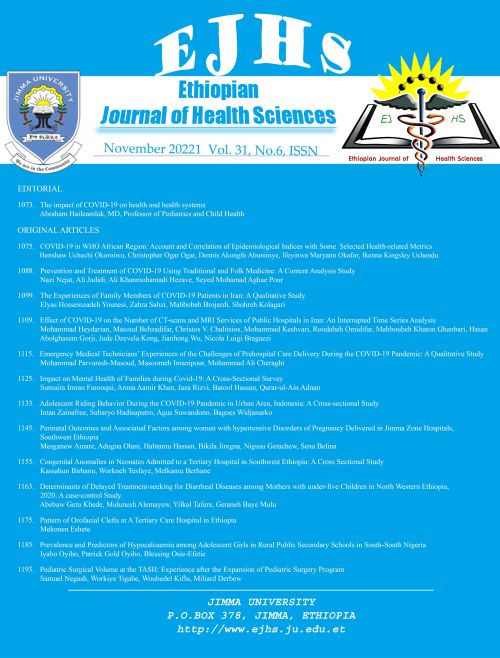Main Article Content
Prevalence and Predictors of Hypocalcaemia among Adolescent Girls in Rural Public Secondary Schools in South-South Nigeria
Abstract
BACKGROUND፡ Adolescent girls are at risk of developing skeletal inadequacy due to an imbalance between calcium intake and high requirements of calcium during this period of increased modeling and skeletal consolidation. This study assessed the prevalence and predictors of hypocalcaemia among adolescent girls in rural public secondary schools in south-south Nigeria.
METHODS: This was a cross-sectional study conducted to assess the prevalence and predictors of hypocalcaemia among 238 adolescent girls selected by a multi-stage sampling technique. Data was collected using a semi-structured questionnaire which was interviewer-administered. Descriptive and inferential analysis of data collected was carried out using the IBM SPSS version 22 software.
RESULTS: Over half (53.3%) and 75.2% of the participants were in their late adolescence period (17-19 years) and belonged to the lower social class level. Over one-quarter (30.7%) of the participants had hypocalcaemia. Participants who were in their mid-adolescence period (14-16 years) (OR= 2.38; 95% CI: 1.23-4.57), who skipped lunch (OR= 2.92; 95% CI: 1.35-6.34), who skipped breakfast (OR=3.60; 95% CI: 1.65-7.83) and were in senior secondary 1 class (OR=4.76; 95% CI: 1.21 18.75) had 2, 3, 4, and 5 times higher likelihood respectively of having hypocalcaemia. Participants who consume milk daily, who consume milk weekly and who had normal weight had 81.0%, 60.0% and 72.0% decreased odds respectively of having hypocalcaemia.
CONCLUSION: The study brings to the fore a high prevalence of hypocalcaemia among the participants. Educational interventions targeted at parents to support adolescent girls to take calciumsupplements and calcium-rich meals should be implemented.






